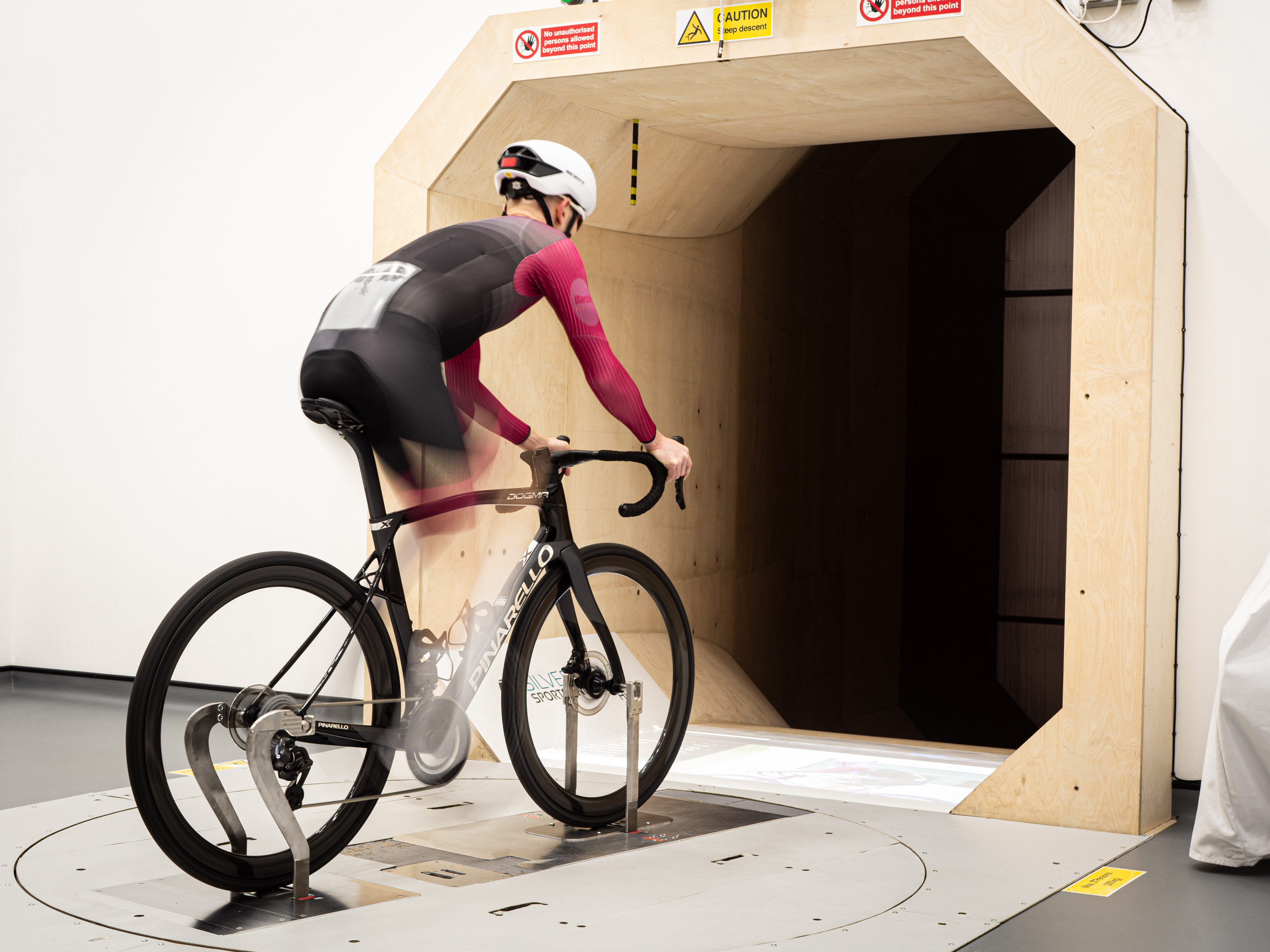
For a lot of cyclists, cadence is an overlooked element of the performance equation. Cadence refers to the speed at which you turn the cranks over and is personal to your riding style and to some extent your physiology. Deliberately riding at specific cadence ranges could potentially open up some performance gains. Even though for the most part the science now seems to agree that your self-selected cadence is often the most efficient for you (within reason), spending some time working across a range of cadences could be what your training is missing.
Cadence is part of the equation for power. Essentially power boils down to the force you put through the pedals multiplied by the cadence you pedal at. This means that by altering your cadence you can directly influence your power output. For example, to ride at 200 watts, if you ride at a cadence of 110 revolutions per minute (RPM) you will need a comparatively lower force applied to the pedals than if you pedalled at 70 RPM. This results in less muscular fatigue as there is less fibre strain when pressing on the pedals. Instead, the main system that is predominantly stressed at higher cadences is your cardiovascular system with your heart, lungs and blood doing most of the heavy lifting.
On the flip side if you decide to ride at a very low cadence, the force required on each pedal stroke is going to be far greater, this will mean that more muscular engagement is required which will result in greater muscular stress.
At any given output the most efficient cadence is the one that uses the least energy overall, as a result, we often see the most efficient cadence for any given rider increase in line with power output.
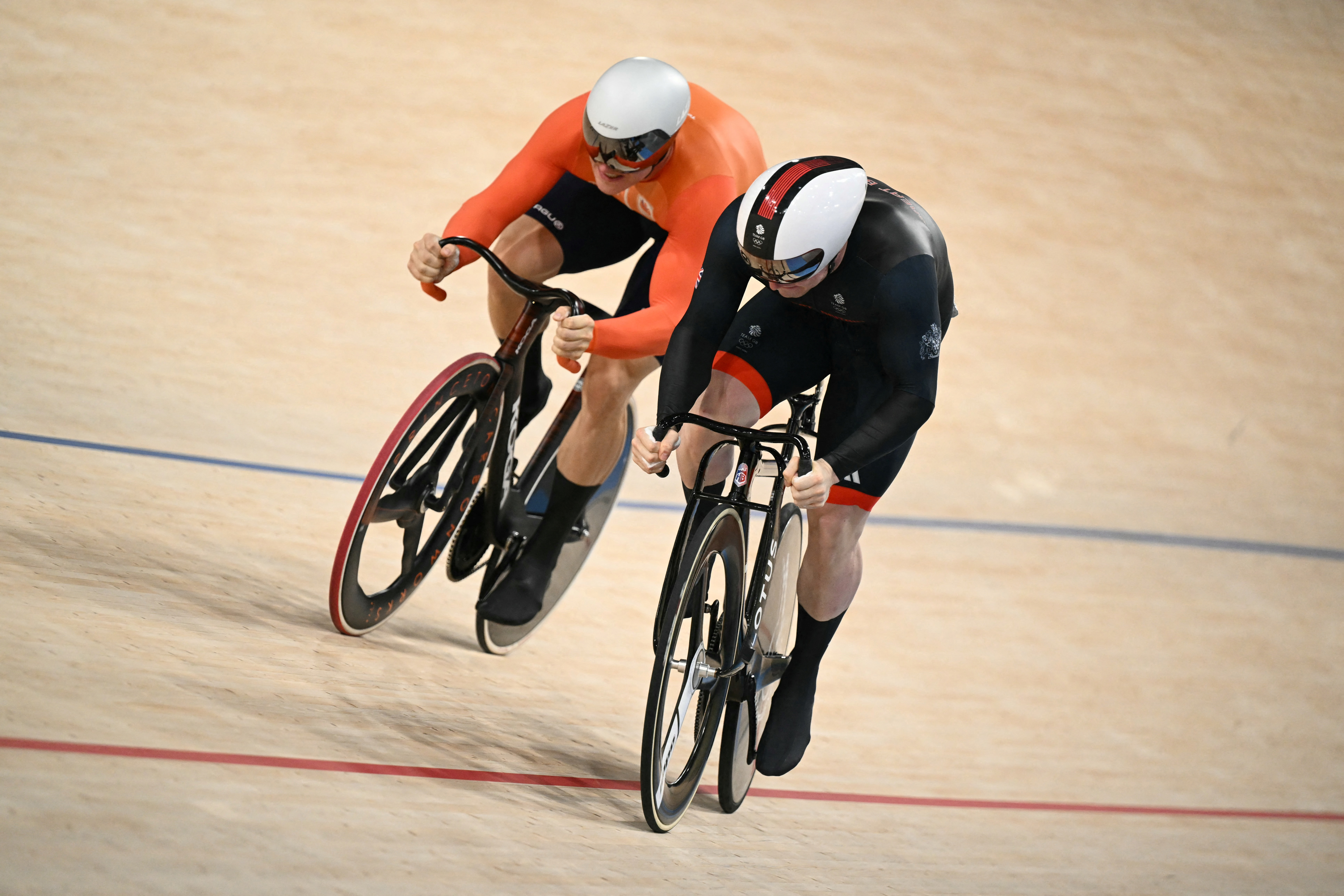
The science behind why the same cadence is not always equal
To complicate matters further, cadence is more complex than simply how fast you turn the cranks. Depending on environmental factors such as gradients, headwinds or road surfaces, the way the force on the pedals is applied at identical cadences can vary massively. This is why riding at 90rpm on the flat can feel very different to riding at 90rpm on a steep gradient and it also goes some way to explain why it can be hard to put any meaningful power out on a fast descent.
The reason behind this phenomenon, known as crank inertial load (CIL), is due to the inertia of the bike and rider on steeper gradients. The CIL is lower on climbs than when riding on the flat. As the CIL decreases the torque required increases and therefore often facilitates a decrease in cadence allowing riders to ‘push through more of the pedal stroke.’
Essentially, changes in CIL have been shown to directly correspond to changes in cadence and go some way to explain why riders typically have a different cadence when riding on the flat compared to riding on a steep climb. Although some studies have shown that there is no measurable difference riding at the same cadence in high or low CIL situations, it can feel different. This is one of the reasons that specific cadence training can be beneficial to incorporate into your training.
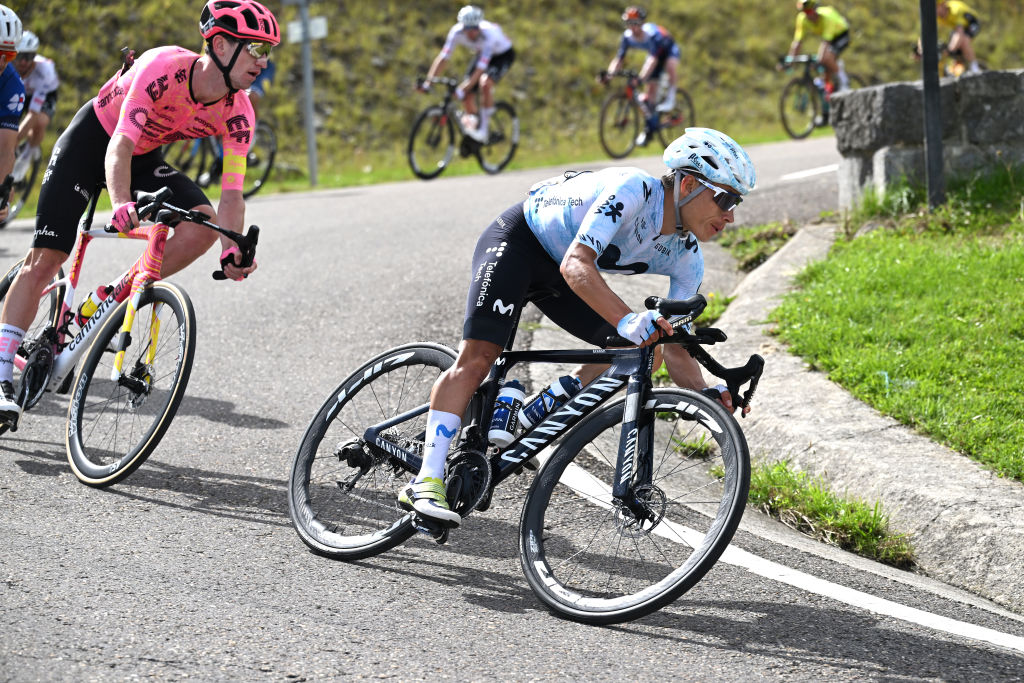
When you are cycling on the flat or a descent, the inertia of you and your bike does the majority of the work of continuing your speed through each pedal stroke. This means that the power you apply is used to mostly maintain your speed. In high inertia environments, the rate at which power needs to be loaded and subsequently unloaded is far higher than on a climb where inertia is far lower and power is required continuously to maintain forward momentum.
As a result, training at different cadences should be practised both on climbs and on the flat to develop your body's ability to effectively produce power not only at different cadences but also with different crank inertial loads. If you find that you struggle to maintain a high power output as your speed increases, some cadence drills on a gradual false flat descent can train your neuromuscular system to more effectively deliver power.
How your body responds to different CIL is biologically different with high inertial loads recruiting a higher percentage of fast-twitch muscles that are better able to deal with the short and snappy delivery of power per pedal revolution. At lower inertia power is generated by a greater volume of slow-twitch muscles.
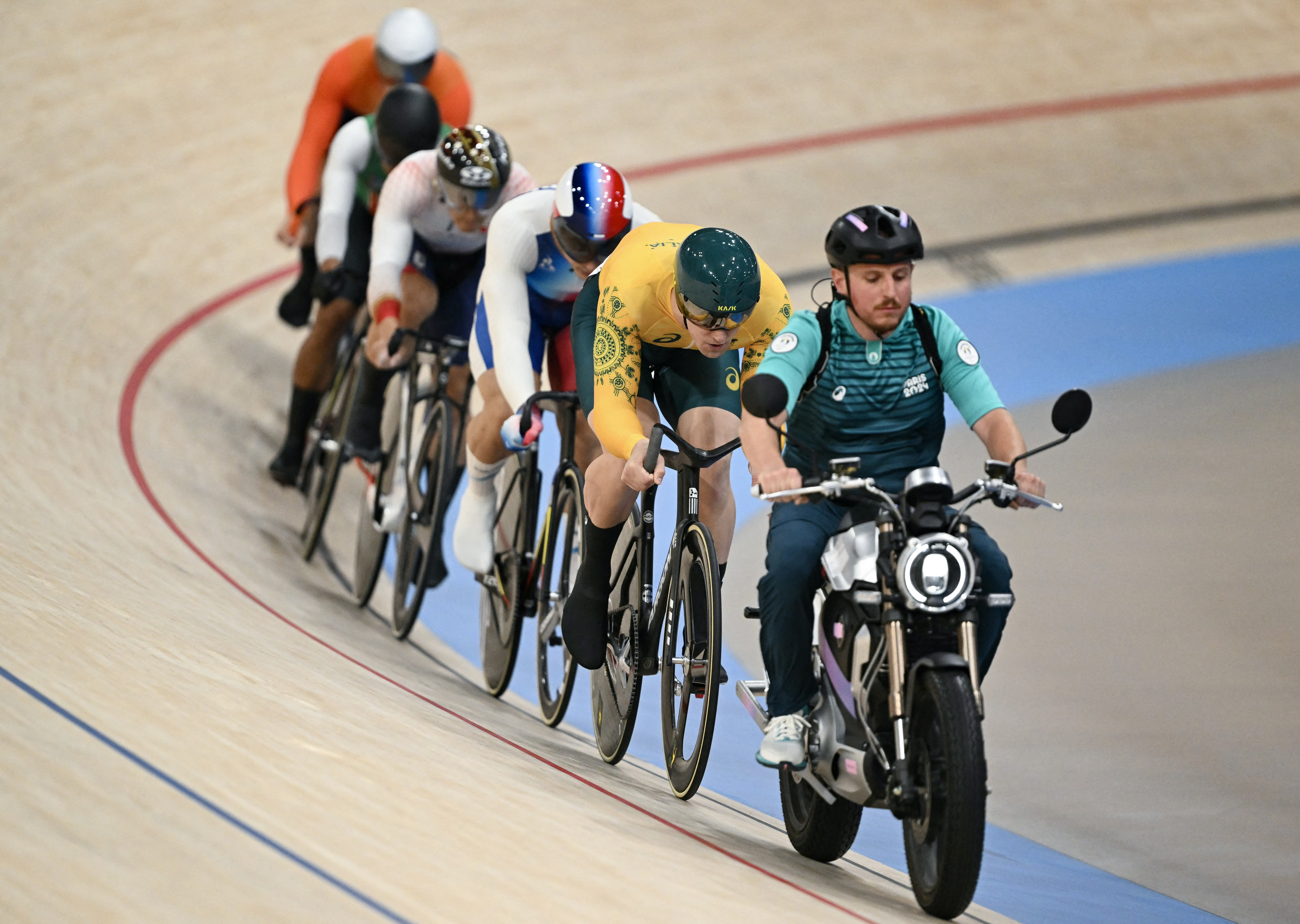
Low cadence training can be seen as on-bike strength training
If we consider the earlier point regarding the equation for power development on a bike, riding at a slower cadence requires a great force generation per revolution of the cranks. This means that at low cadences of 65RPM or lower riding at intensities close to zone 4 can be used to develop muscular strength.
When we cycle, not all of the muscle fibres in our legs are used and as a result, not all of the muscle fibres benefit from the stress adaptions that come from training. By increasing the force generation required a greater percentage of your muscle will need to be recruited. In return, this will stimulate a greater percentage of muscle to become more fatigue-resistant.
If you are looking to increase your maximal power output there are really only two ways to achieve this, either train yourself to ride at a higher cadence or increase the force you can generate per pedal stroke. For a trained cyclist the option to increase their cadence by any meaningful increment for any meaningful duration is a hard ask. Increasing your muscular capacity to generate force can typically yield a greater net increase in maximal power output.
By riding at a moderate (zone 3) intensity at a cadence below 65rpm your muscles will recruit more fibres to generate the increase in force. These fibres will then be able to generate force more effectively at your self-selected cadence when cycling at peak power outputs.
High cadence drills can improve pedalling and cardiovascular abilities
If you have ever tried to ride at a higher than typical cadence you will know that after not very long at all, keeping your legs ticking over can become a task in itself. At higher cadences of over 110rpm delivering a smooth pedal stroke can become difficult.
High-cadence training improves neuromuscular coordination, which is essential for maintaining smooth, controlled pedalling. This coordination becomes particularly important in situations that require rapid changes in speed or direction, such as navigating through a group of riders or accelerating out of a corner. Increasing your effective ‘rev range’ can also have the effect of raising your natural self-selected cadence which at higher power outputs can have a positive impact on efficiency.
Spending some time in training at higher cadences will also shift the training stress to a mainly cardiovascular bias. Moving your legs costs energy in itself, so moving your legs faster will cost more energy, with the decrease in force generation and the increase in crank rotational speed your body relies on oxygen to generate power.
There is some evidence to suggest that riding at higher cadences at the same power will put a greater training load on your cardiovascular system which will promote adaptations to how efficiently your body can supply your muscles with oxygen.
Varied cadence training opens up a range of cadences to ride at
Varied cadence training helps you learn to switch gears effectively and find the most energy-efficient cadence for riding conditions with different CILs. The skill to alternate between higher and lower cadences can be especially useful during undulating or long rides. Being able to adjust your cadence to match the demands of the terrain, you can reduce energy expenditure and delay the onset of fatigue.
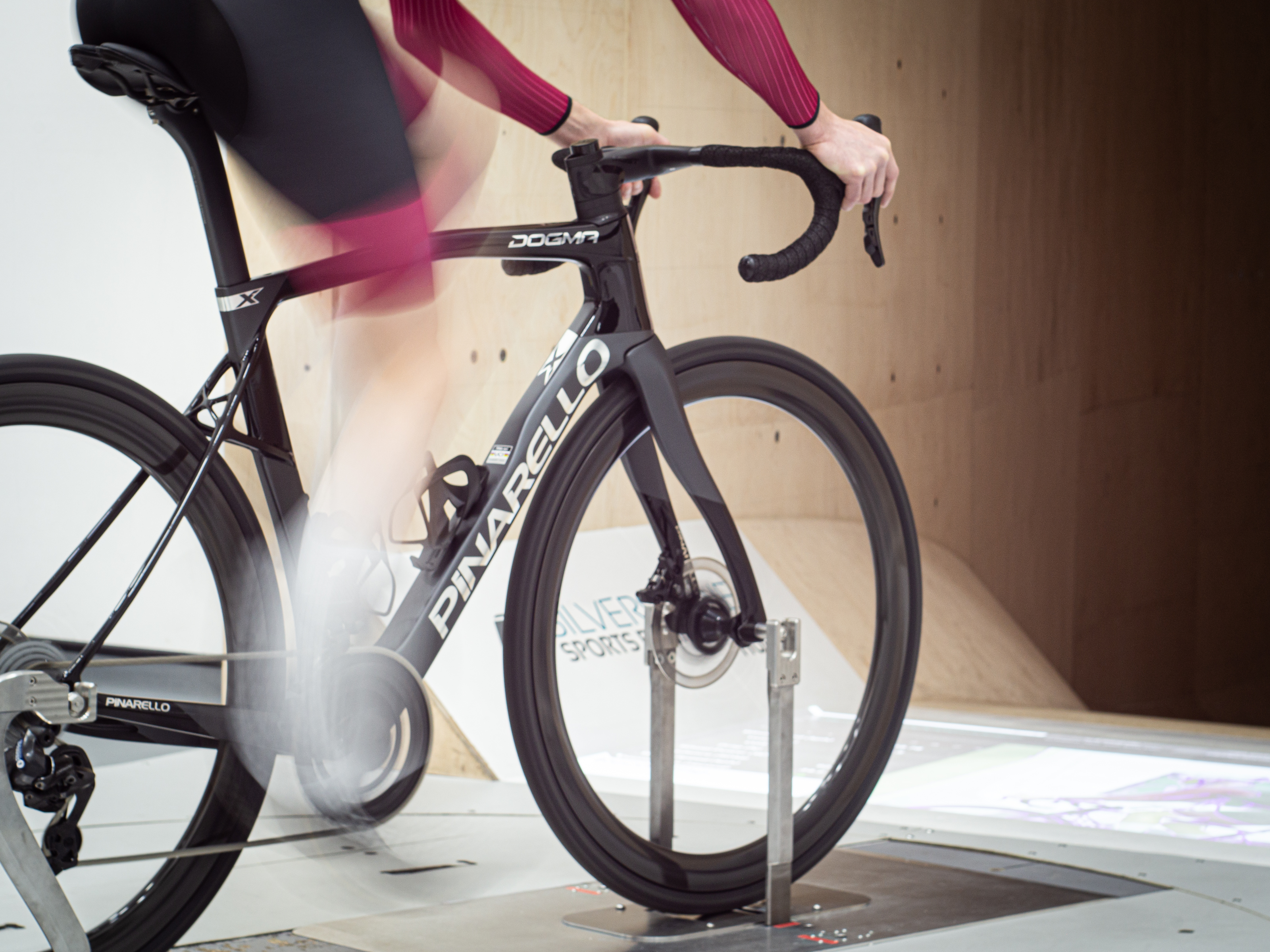
Combining high and low cadence training will make you a more rounded-athlete
Adding a mix of high-cadence and low-cadence work into your training is certainly worthwhile if you feel like you have reached a plateau. The increase in muscular recruitment driven by low cadence training and the cardiovascular and pedalling benefits of high cadence training will have a positive effect on your ability when riding at your self-selected cadence.
Ways to implement varied cadence training
To get the most from varied cadence training, it's important to integrate it systematically into your cycling training and you can do it in several ways.
Structured Intervals: Incorporate intervals of low-cadence (60-70 RPM) and high-cadence (100-120 RPM) pedalling into your rides. Start with shorter intervals and gradually increase their duration as your body adapts. It will feel both physically and mentally challenging at first to ride outside of your natural cadence range.
Hill Repeats: Perform hill repeats at both high and low cadences. Climb a hill at a low cadence, focusing on delivering power smoothly through the whole pedal stroke without stamping on the pedals. This can then be repeated at a higher cadence, focusing on leg speed and efficiency once again paying close attention to smooth power delivery.
Cadence Drills: These can be included in any ride sporadically to accumulate time riding at a varied cadence. For example, ride at your normal cadence for a few minutes, then switch to a higher cadence for a set period, followed by a lower cadence. Look to spend between 1-2 minutes at the different cadences to start off with before building up to blocks of five minutes or more.
Overgeared efforts: Adding some sprint efforts where you begin from a rolling start in a very big gear will help develop your peak muscular force generation. Efforts of 15-20 seconds will allow for you to get up to speed and start spinning the gear which will have the added benefit of improving your ability to develop power across the whole cadence range.
Monitor Your Progress: Tracking your training with cadence and power data will help you to see the performance benefits. Small improvements are hard to register unless you are looking for them so spending some time looking at how your power/cadence is improving is a great way to ensure what you are doing is having a positive effect. Having a record of your training also allows you to keep track of what you have done in the past so that you can adjust the intensity/duration of your cadence intervals to keep them challenging and driving those physiological adaptions.







